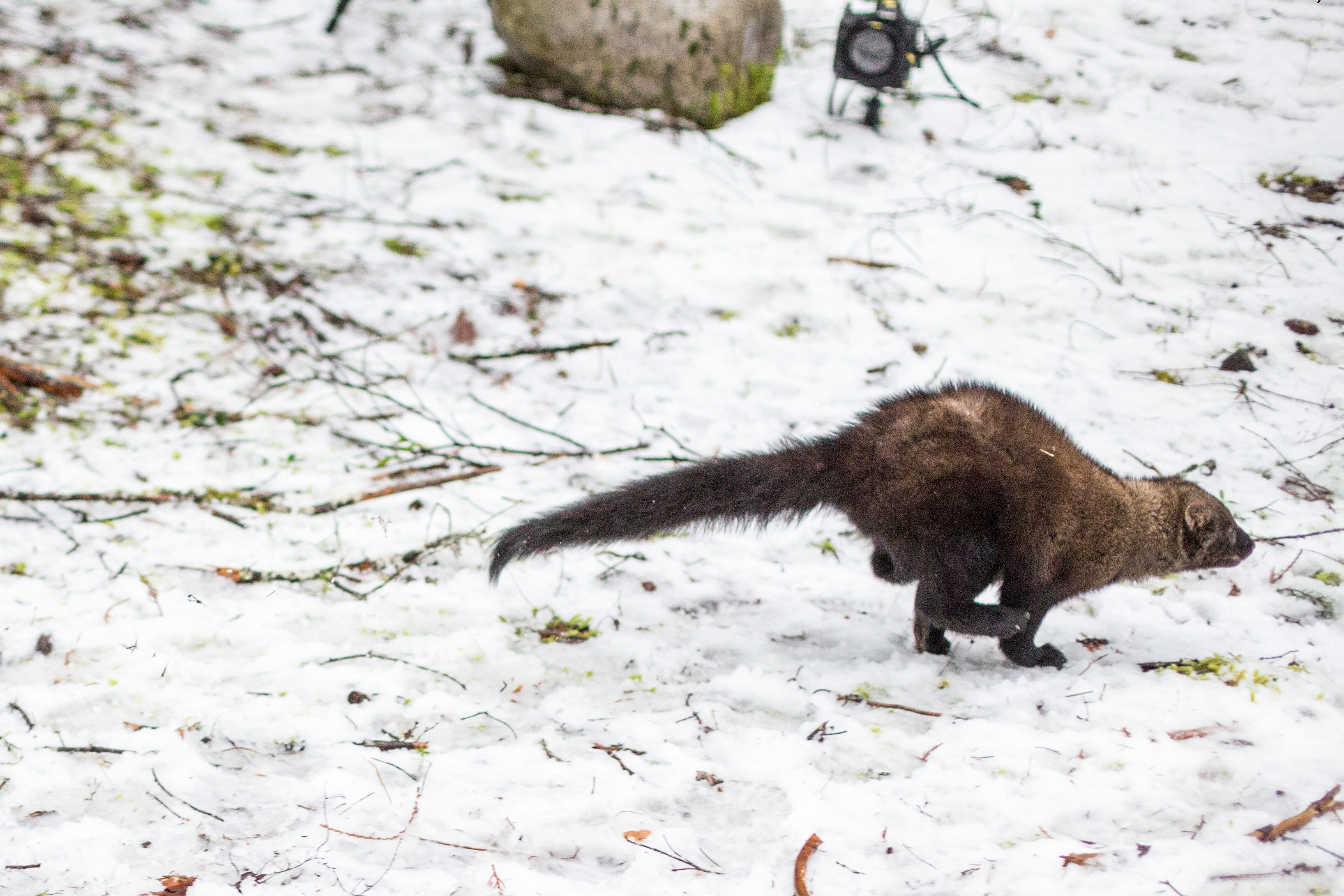Pacific fishers: little but fierce predators of the boreal forest
Our “Species of the Week” series highlights the flagship species of each of the 844 unique ecoregions contained within Earth’s bioregions.
When asked to describe the Pacific fisher, Noah Greenwald from the Center for Biological Diversity says, “it's like a bear mashed up with a squirrel.” Dr. Craig Thompson from the U.S. Forest Service adds, “maybe a wolverine, otter” and Dr. Mourad Gabriel from the Integral Ecology Research Center gets even more specific, “I would bring in the grizzly bear because just having that attitude of ‘I kind of rule this forest’.” A member of the mustelid, or weasel family, the fisher is a small mammal native to the boreal forests in Canada and the northern United States. With the largest adult males weighing in at 13 pounds and measuring 3 feet long, fishers are widely unseen due to their slender bodies and their solitary nature.

Pacific fishers are the flagship species of the Klamath-Siskiyou Forests ecoregion, located in the Pacific Northwest Coastal Forests bioregion (NA15).
Fishers have dark, dense, and glossy fur in the winter. In the summer, their color becomes lighter and streaks or patterns appear as they go through a molting cycle. Although they are excellent climbers, most of a fisher’s time is spent on the forest floor foraging for food. Their name is a bit misleading as fishers are not known to feed on fish, preferring snowshoe hares, rodents, birds, and the occasional mushroom or berry. They are also one of the few predators of porcupines with their feisty stamina and quick reflexes. The fisher is one of the few mammalian species able to descend down trees head-first as they can rotate their hind paws almost 180° and have flexible ankle joints. Large paws also make it easy for them to move on top of thick snowpacks.

Image credit: Creative Commons
Their specialized paws also assist in mating. A plantar gland on their hind legs gives off an odor, allowing fishers to find each other during the breeding season in late March to early April. However, active pregnancy is delayed for ten months until the following February in what is known as embryonic diapause. Certain species of mammal, like the fisher, have evolved in this way to time the birth of their offspring for favorable conditions such as a full springtime food supply. Female fishers den in hollow trees and their litters range from one to four kits. Between four and five months of age, kits become aggressive with their siblings and the mother then pushes all of them out on their own. At one year of age, juveniles will be sexually mature and have established their own territory.
.jpg)
Image credit: Courtesy of USFWS, Flickr
In 2016, wildlife agencies determined that Pacific fishers no longer occupy the full extent of their historic range. Despite conservationists’ best appeals, Pacific fishers have not been added to the IUCN’s List of Endangered Species. “They’re often one of those species we don’t know much about but fill a fundamental role in wildlife communities. They also tend to be in trouble,” said Dr. Thompson. Overhunting for pelts, habitat loss due to logging, and rodenticides used in illegal marijuana cultivation all have added to a decline in population. Successful release programs, like the Washington Fisher Restoration, have reintroduced Canadian fishers into the North Cascades National Park near Seattle.
.jpg?auto=compress%2Cformat&w=1440)


